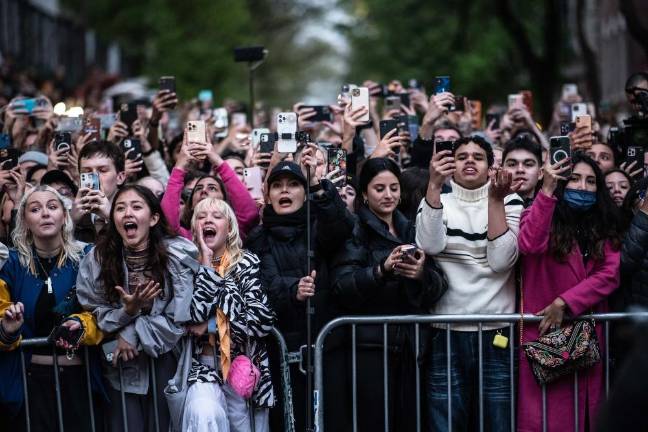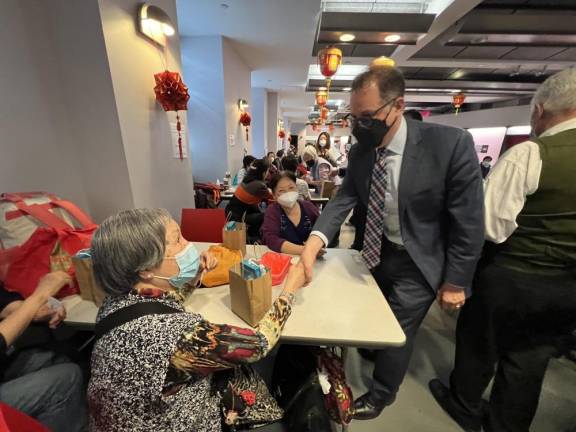If it feels as if everyone around you has been getting COVID-19, that is probably because, epidemiologically speaking, they are.
One out of four New Yorkers likely contracted the virus in just the ten weeks between January first and March 16, according to a survey by City University researchers, far more than the official data reported.
That was as the first surge of Omicron, the so called BA.1 variant, was receding.
A second surge, of BA.2, seems to be building now, although it is hard to know for sure because we are testing less and much of the testing is now conducted at home and goes unreported, observes the lead CUNY researcher, Professor Denis Nash.
“It may be we don’t truly appreciate the magnitude of this surge because of the low number of people who are testing,” Nash explained. “That’s a very bad scenario because we would be blindsided.”
A worrisome piece of data in support of this is that hospitalizations, while still below earlier surges, are rising, sharply among the unvaccinated. Overall case rates are also climbing and the city raised the recently redesigned alert levels for community spread to medium.
“The coming weeks will be critical to slowing the spread of COVID-19 and getting back to a low-risk level so we can move more safely and enjoy our spring,” said the health commissioner, Dr. Ashwin Vasan.
This raised alert came, however, only with advice to be cautious (consider wearing a mask in indoor public settings) but no new or restored restrictions on public interaction, for which there seems to be little political appetite.
“The steps you take to protect yourself also protect others, especially those most vulnerable,” Vasan said.
Spring Awakening
But those steps do not appear to include measures that would dampen the city’s festive spring awakening. After two years of various levels of isolation, New Yorkers roared back to social gatherings, from ballgames and fundraisers to the Met Gala, the city’s most glamorous fashion event.
Masking was not even mentioned on the invite to the launch meeting at Columbia University of the new Pandemic Response Institute, created to “prepare for, recover from, and protect ourselves during public health crisis.” When asked, the organizers said masks were optional.
However, on Saturday, after the inquiries about COVID protocols, the organizers sent a revised invite saying: “Face masks are strongly recommended and will be made available at the venue upon request.”
On Tuesday morning, hours before the event convened, the rules were tightened again.
“We are now requiring face masks at this event,” the organizers announced, “however they can be removed when eating, drinking, or giving a speech.”
Indeed, while proof of vaccination and a negative COVID test were required to attend the Met Gala, held the same day the city raised its COVID alert level, the Gilded Age dress code seemed to spurn any semblance of restraint or even somberness.
Four days after attending the Gala at the Metropolitan Museum, Jon Batiste, the singer and bandleader, announced he had tested positive for COVID-19 and was postponing his American Symphony performance at Carnegie Hall.
There was no immediate word on the health of his tablemates, who included Glenn Close, Questlove and Adrien Brody. Mayor Eric Adams, just recovering from a bout of COVID himself, also attending the Met Gala, and then jaunted off to Los Angeles for two days of events.
Mark Levine, the Manhattan borough president and former chair of the City Council health committee, said the city should redouble efforts to get New Yorkers boosted.
Nearly four out of five new Yorkers have had their basic doses of vaccine, but only 37 percent have taken an additional “booster” dose. This number has “barely moved in recent months,” Levine noted, even though the data is clear that vaccine effectiveness wanes over time and the virus is becoming more contagious.
“Many scientists called omicron (aka BA.1) the most contagious virus they’d ever seen,” Levine tweeted. “BA.2 is 30% more transmissible than Omicron. BA.2.12.1 (now taking over in NY) is 25% more transmissible than BA.2. “
Vaccination has some impact on slowing the spread of coronavirus, but it provides major protection against serious illness. “We need to get boosters moving again,” said Levine.
“Strategic Ways”
Nash said that short of imposing full lockdowns, as China has, there is no way to stop the spread. “We need to think about strategic ways to protect the most vulnerable and essential services,” he said.
“Returning to mask requirements in public places is one,” he said.
The extraordinary contagiousness of the Omicron variant was captured by Nash and his colleagues in a survey they conducted from the CUNY School of Public Health in late March. They asked 1000 adult New Yorkers, reached by phone or online, if since the first of the year they had tested positive for COVID or exhibited symptoms after exposure to someone who had.
Based on their answers, “an estimated 27.4% or 1.8 million adults had SARS-CoV-2 infection” during the ten-week period, the researchers reported on the preprint server MedRxiv.
That is dramatically higher than the city’s official COVID case count for the same period, when 552,084 NYC residents of all ages tested positive for SARS-CoV-2 with a health care or testing provider, the researchers said.
“When compared with our estimate of 1.8 million adults infected during the same time period, our findings point to the extent to which official case counts underestimated the SARS-CoV-2 burden during the surge,” the researchers wrote. “This ‘hidden prevalence’ is due to both non-testing, exclusive at-home rapid testing, and testing too soon after exposure/symptom onset with either a point of care or at-home rapid test.”
Nash said he hoped the survey provided “proof of concept” for federal and local health officials to start conducting such surveys themselves as part of an early warning system for COVID surges.
Indeed, the government has been going in the other direction. The new alert system that was invoked by the city to go to medium risk puts much less emphasis on case counts and more on hospitalizations, which of course lag behind the spread of the virus.
“If we do surveys like this then we can know even early in a surge the extent to which the most vulnerable people are protected or not,” said Nash. “At least we will know a little bit more in advance how widespread it is.”
“It may be we don’t truly appreciate the magnitude of this surge because of the low number of people who are testing.” Professor Denis Nash, CUNY School of Public Health

